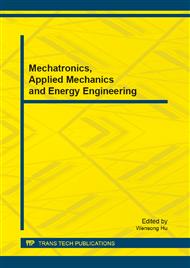p.3
p.8
p.14
p.20
p.26
p.32
p.38
p.45
Researches on Thermo-Electric Properties of Seawater and Al2O3 Nanofluids
Abstract:
The article utilizes thermo-electric performance experiments to study four fixed volume kinds of electrolytes (Tap Water, Mineral Water, Sea Water, and Al2O3 Nanofluids) under different operating temperatures, distances and areas of electrodes due to the impact of the output currents. The experimental results showed that the rise in operating temperature will significantly affect the magnitude of the output current because of heat convection inside the fluid. And the output current of the seawater was much larger than those of the nanofluids, tap water and mineral water between 27 °C and 90 °C. Its maximum value was up to 4.2 mA. However, the seawater presented unstable for output current. The Al2O3 nanofluids had the most stable among them and its output current was about 1.08 mA. If seawater combined with Al2O3 nanoparticles, they will be able to achieve a complementary role in the future development.
Info:
Periodical:
Pages:
14-19
Citation:
Online since:
September 2013
Authors:
Keywords:
Price:
Сopyright:
© 2013 Trans Tech Publications Ltd. All Rights Reserved
Share:
Citation:


